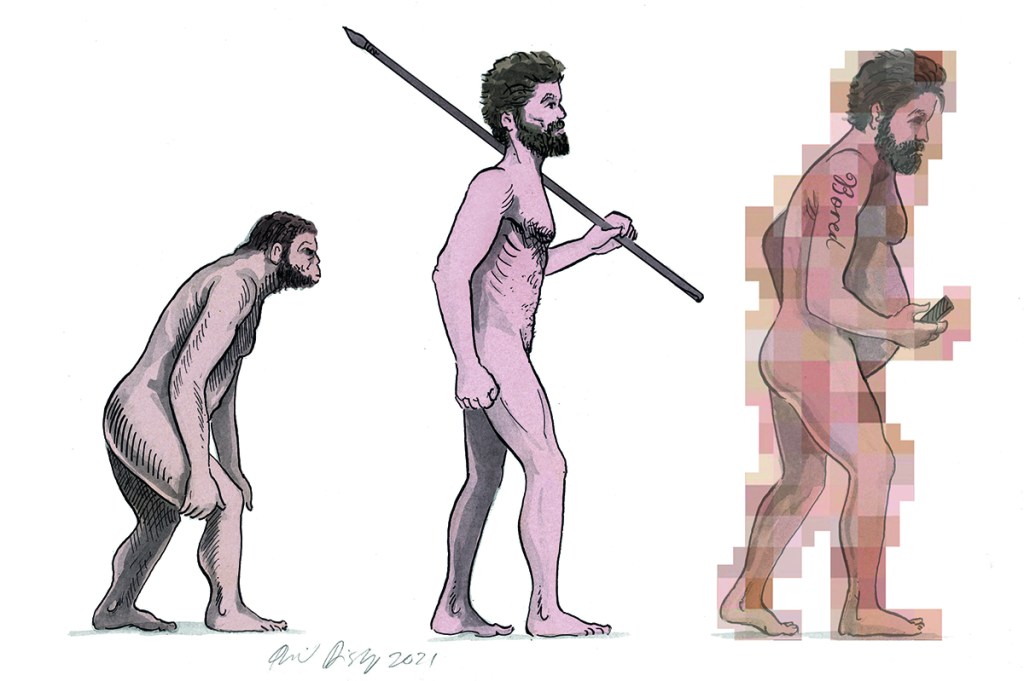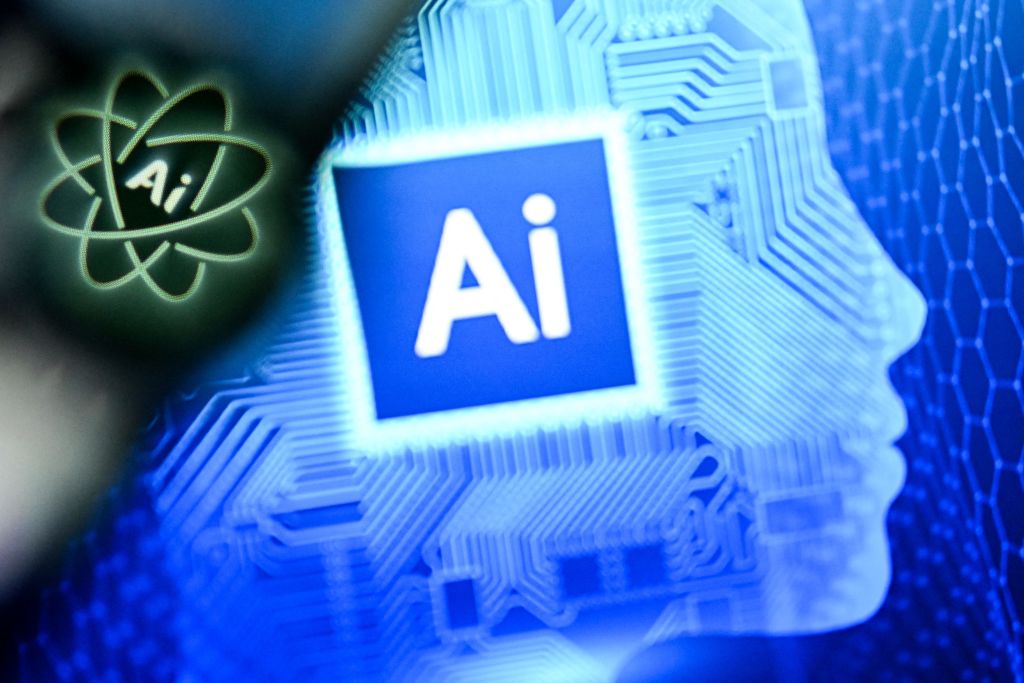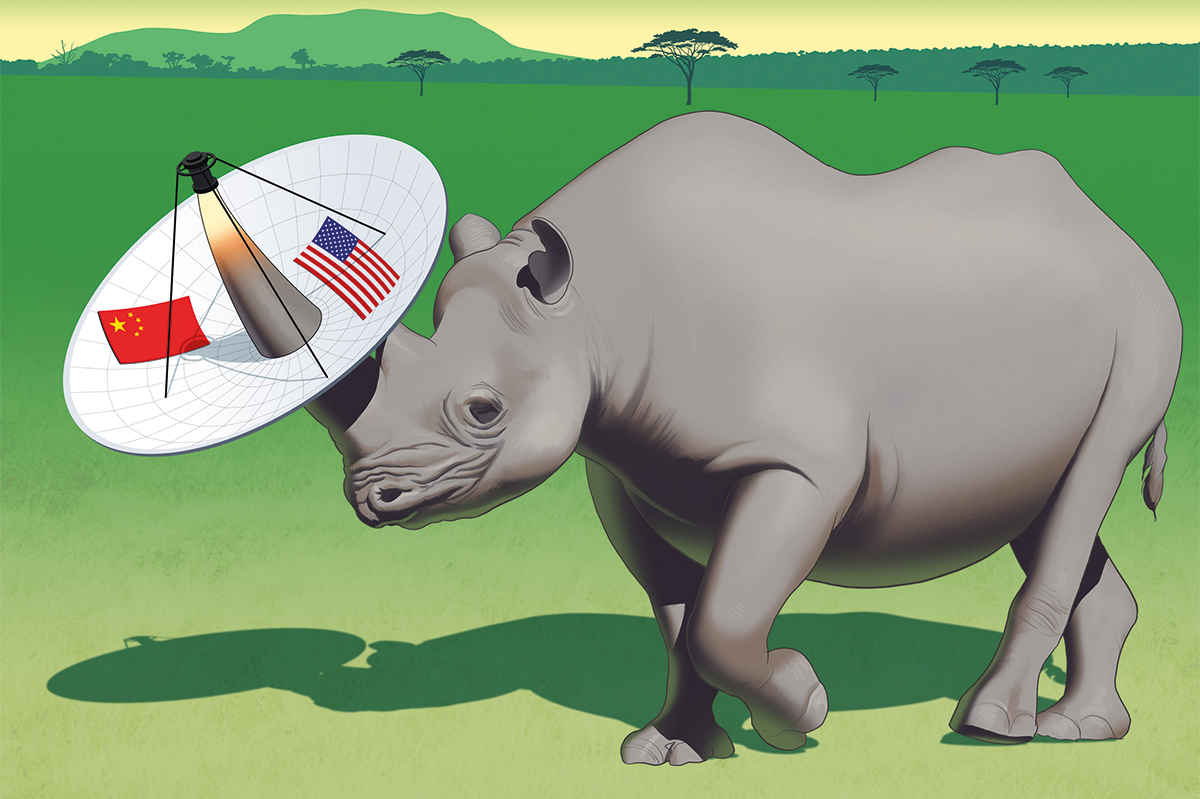If the history of humanity is the history of big ideas — from the wheel to space flight, cave painting to the multiplayer game, monotheistic religion to special relativity — then the same is true of our future. By the 1960s the developed world had witnessed 200 years of extraordinary activity on every front. This was the era of the moonshot; of political obsession with technological mastery; of experimentation in music, culture, knowledge and relationships. Humanity had undergone a big-ideas revolution and the expectation was that progress would keep accelerating.
In 1967, Herman Kahn, the futurist and theorist of nuclear war, and fellow futurist Anthony J. Wiener published The Year 2000: A Framework for Speculation Over the Next Thirty-Three Years. Their systematic overview forecast forthcoming milestones in science and technology, but most of their predictions remain unrealized. We do not have ‘control of the weather and/or climate’, a permanent manned lunar installation or even ‘automated home maintenance’. We do not have a reliable way of reversing aging. We do not directly communicate into the brain. It is perhaps for the best that we also lack ‘space defense platforms’ or use nuclear detonations for mining.
Kahn and Wiener predicted that ‘90-95 percent’ of their ‘very likely technical innovations’ would appear. But many, if not most, have not been realized, and many of the achievements are banal. We got video players and home computers, satellite TV, ‘extensive use of transplantation of human organs’ and ‘commercial extraction of oil from shale’. But Kahn and Wiener surely anticipated something more radical and decisive. What went wrong?
Our recent ancestors inhabited a very different world, but it had already begun changing rapidly. Exponential population growth saw the US start the 19th century with just 5.3 million citizens and end it with 76 million, bigger than any European country save Russia. In the space of a few decades, homes were transformed from quasi-medieval hovels into ‘networked’ houses with clean hot and cold running water. Electricity replaced much of the backbreaking domestic labor which had dominated the lives of women. The lightbulb and the motor car, both effectively invented in 1879, were still novelties at the end of the 19th century. Twenty years later, both were produced by the million.
Big ideas were conceived and executed at an accelerating pace. The bounds of knowledge shifted, and fundamental forces like energy and evolution became tractable. The mystery of disease started to unravel. In the early 20th century, Albert Einstein transformed the understanding of basic categories like time and space. Culture underwent a revolution. Mass entertainment, from television to radio shows, became a reality. Knowledge, culture, technology, social organization, everyday life: all entered a revolutionary cycle.
For perhaps the first time in history, every dimension of human experience changed. This was a historic break, built on rapid, vaulting advances, decade after decade. The model that Kahn and Wiener built was a natural continuation of this outpouring. But it’s now clear that our trajectory is more complicated.
Change remains rapid in some areas, yet it has slowed in others. Above the roiling tempest of everyday life, above even pandemics, financial crashes and the fissures and rivalries of nations, the future is once again uncertain.
Welcome to the great meta-problem of the 21st century. To open the latest issue of Wired or Nature is to be treated to a parade of wonders: quantum biology, nanotechnology and exoplanet astronomy to nudge unit governance, blockchain and virtual worlds. From these extraordinary new discoveries, products and achievements, we might think that this is a uniquely fecund time. Mounting evidence suggests the opposite. We have less an innovation machine than an innovation illusion, the skeptics say: flat growth rates, incremental and derivative developments in technology, paradigms of knowledge and culture that have been stuck for decades.
The common perception of acceleration, the stagnationists argue, no longer applies. We are no longer leaping forward through great scientific revolutions; rather, we are moving only in cautious increments and responding to great challenges with complacency and decadence. After 50 years, we still haven’t been back to the moon. We haven’t cured cancer. Life-expectancy increases have stalled. We’re still addicted to carbon-based energy. The visions of Kahn, Wiener and the postwar futurists remain unrealized. The belief that progress has stagnated appears across the intellectual spectrum: free-market libertarian entrepreneurs, socially conservative newspaper columnists, centrist business consultants and anarchist academics, economists and tech titans.
Yet plenty of evidence contradicts the stagnation thesis. Now, in the face of a rush of discoveries, some of its progenitors are wondering if we are beginning to reverse the slowdown. After all, the COVID-19 pandemic has been a time of superfast vaccine development, reimagined logistics and habits changed on an unprecedented scale.
There is cause for optimism. If the 18th century marked a Great Divergence, when Europe pulled away socioeconomically to become the dominant world power, we are now living in the snapback: the Great Convergence. Throughout history, societies have been prisoners of geography, constrained by place, culture, knowledge and resources. Now the shackles are breaking down. A scaled-up world accommodates scaled-up flows of information and people. Opportunities for the previously marginalized start appearing in burgeoning cities. Connected digital spaces open economies and newly empower universities. Transportation and communication technology spur further invention and innovation.
A new generation of ideas in philosophy, law, economics and social policy will arise from grappling with the radical implications of powerful, widely dispersed technology. The processes used to arrive at these ideas may be distinctively new — for example, there may be deliberative mechanisms susceptible of global mediation relating to uncertain but immensely powerful technologies.
But before we can try to instill values in AI, we first must agree what those values might be, a difficult hurdle to say the least. Above all, we shouldn’t fear failure. We don’t have endless chances, and failure hurts and destroys careers. Still, trial and error are essential. For individuals, organizations and governments, making breakthroughs means being massively comfortable with failure. Risk is what makes the future viable.
The current turbulence should be a prompt to ambitious rethinking, since the risks of stagnation are clear. If we succeed, we could re-accelerate fundamental science, allowing researchers to unravel dark matter and dark energy, profound mysteries that sit at the heart of our understanding of the cosmos. We should expect great and popular new art — the Shakespeare of computer games, the Beethoven of VR, the J.K. Rowling of DNA. There is scope for major new genres and new media to emerge. Perhaps we might one day have installation artworks that draw viewing figures equivalent to the most popular TV programs. We might, eventually, get the Great American Novel.
Mindbending ideas could be the stuff of every day. Religious and metaphysical questions may fuse with what was once called science; the theological and the material are, at last, a continuum. We could find answers to questions of the multiverse: were there many Big Bangs, infinities of prior and parallel universes? Do they all have different laws of physics? How might those other laws operate? Can we travel between them and make use of them? We might even definitively prove the universe is but a simulation running on some distant server – and then crack its code and rewrite the laws of nature themselves.
The adventure of ideas is far from over. We should be excited by our blind spots, portions of thought so radical and strange that discussion is still quite literally inconceivable. The biggest ideas of all will be those that truly surprise us. As long as they can do that, our future is bright.
Michael Bhaskar’s new book is Human Frontiers: The Future of Big Ideas in an Age of Small Thinking (MIT Press, $30). This article was originally published in The Spectator’s November 2021 World edition.

























